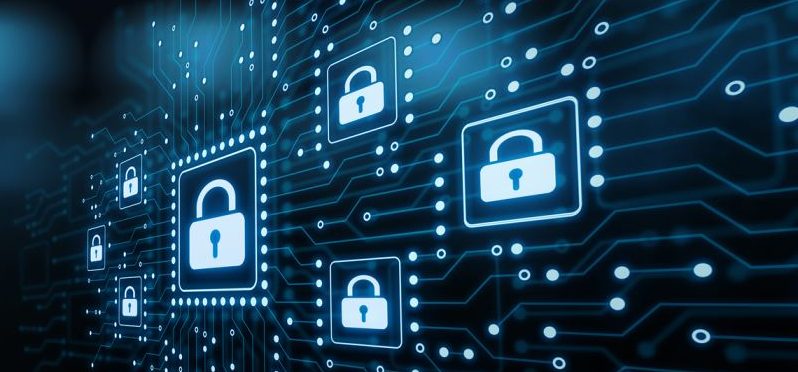Exactly How Appropriate Data Destruction Adds to Robust Computer System Safety And Security Solutions and Mitigates Threats of Information Violations
In today's electronic landscape, the relevance of correct information damage can not be overemphasized, as it acts as a fundamental part of detailed computer safety services. By executing reliable data erasure strategies, organizations not just safeguard sensitive information from unauthorized gain access to yet also boost their compliance with governing structures - data destruction. The implications of insufficient information destruction extend past plain conformity; they can exceptionally affect a company's cybersecurity stance and track record. Comprehending these measurements raises crucial concerns regarding the methods in position and their effectiveness in an age of rising cyber dangers.
Relevance of Information Devastation
In today's digital landscape, the relevance of data devastation can not be overstated. As companies progressively count on digital assets, the prospective threats connected with information breaches and unapproved access amplify. Efficient data devastation is an essential element of a detailed information safety and security technique, safeguarding sensitive information from falling under the hands of malicious actors.
When data is no much longer needed, simply erasing data or formatting hard drives is insufficient. Recurring information can commonly be recouped utilizing easily available devices, positioning significant threats to both companies and people. This emphasizes the need for robust data devastation methods that guarantee all data is irretrievably removed.
Moreover, regulatory conformity mandates, such as GDPR and HIPAA, highlight the obligation to protect delicate data, including its correct disposal. Non-compliance can lead to severe economic penalties and legal consequences. data destruction. Hence, incorporating reliable data devastation protocols not only enhances security however also strengthens an organization's reputation and reliability

Techniques of Secure Information Erasure
Numerous efficient methods of safe data erasure can be employed to make sure that sensitive details is completely eliminated from storage space devices. One commonly recognized method is information overwriting, which includes changing existing data with arbitrary patterns numerous times. This technique dramatically minimizes the possibilities of information recovery, although it might not be efficient versus advanced forensic methods.

Physical destruction is also a trusted strategy, where storage space tools are rendered unusable through shredding, crushing, or incineration. This method makes certain that data can not be recovered whatsoever however requires cautious handling of unsafe products.
Last but not least, specialized software program devices made for secure data erasure provide functionalities that abide by various erasure standards. These devices usually consist of functions like verification processes to confirm effective information damage.
Employing these methods in combination can boost data safety and mitigate the risks connected with information breaches, making sure that sensitive information is not accidentally revealed.
Legal and Conformity Considerations
The approaches utilized for protected data erasure not just serve to shield sensitive details however additionally should straighten with lawful and compliance structures governing information defense. Organizations are needed to follow numerous guidelines, such as the General Information Protection Guideline (GDPR), the Medical Insurance Mobility and Accountability Act (HIPAA), and the Repayment Card Sector Information Safety Criterion (PCI DSS) These regulations mandate particular methods for information dealing with and devastation, guaranteeing that delicate and personal information is irretrievably erased when no longer required.
Failure to abide with these legal demands can cause substantial penalties, consisting of fines and reputational damage. Furthermore, organizations need to maintain records of data damage processes, showing conformity during audits or investigations. This documentation not only safeguards versus this post lawful repercussions but also strengthens trust fund with stakeholders and consumers, showcasing a dedication to data safety and security.
Integrating legal and compliance considerations into information devastation practices is crucial for any organization. It decreases the danger of information violations and highlights an aggressive strategy to protecting delicate info, eventually promoting a culture of safety and security and liability throughout the company.
Effect On Cybersecurity Pose
Efficient information devastation significantly boosts a company's cybersecurity position by minimizing the possible assault surface for cyber threats. When delicate information is not effectively destroyed, it continues to be easily accessible to destructive stars who can exploit this details for unauthorized gain access to, identity burglary, or business reconnaissance. By applying robust data destruction methods, organizations can effectively lessen the threat of data violations and enhance their overall protection structure.
Additionally, the protected disposal of unneeded or obsolete data not just secures sensitive info however also aids organizations adhere to industry regulations and standards. Failing to effectively destroy information can lead to extreme legal effects and reputational damage, additional compromising a company's cybersecurity stance.

Inevitably, focusing on reliable information damage is vital for cultivating a durable cybersecurity pose, making certain that companies stay alert versus developing cyber threats while safeguarding their critical assets and stakeholders.
Best Practices for Organizations
Implementing best techniques for information damage is important for organizations intending to secure delicate details and alleviate cybersecurity dangers. Organizations need to establish an extensive data devastation plan that outlines treatments and obligations. This plan ought to adhere to pertinent laws, such as GDPR or HIPAA, making sure lawful consistency.
Secondly, it is vital to make use of authorized information sanitization techniques, consisting of data cleaning, degaussing, and physical damage, customized to the kind of information and storage tool. Utilizing licensed professionals for information destruction solutions boosts the dependability of these methods.
In addition, organizations must maintain an in-depth stock of all information storage gadgets, ensuring that all outdated or changed devices undertakes destruction. Routine audits of information destruction techniques can assist enhance and recognize weaknesses conformity.
Staff member training is another important facet, as staff has to understand the value of information devastation and follow established methods. Finally, organizations ought to document all data damage tasks to supply accountability and traceability, which can be important during audits or in case of a violation.
Verdict

One commonly identified method is information overwriting, which entails replacing existing information with random patterns visit this website several times.The approaches employed for safe information erasure not just serve to shield sensitive information however additionally should line up with lawful and conformity frameworks regulating data protection. These laws mandate specific procedures for information handling and destruction, making sure that sensitive and personal data is irretrievably gotten rid of when no longer required.
By executing robust information devastation methods, companies can successfully decrease the threat of information violations and enhance their overall safety and security framework.
In conclusion, proper data destruction is vital for improving computer safety and security services and minimizing the risks associated with data breaches. - data destruction